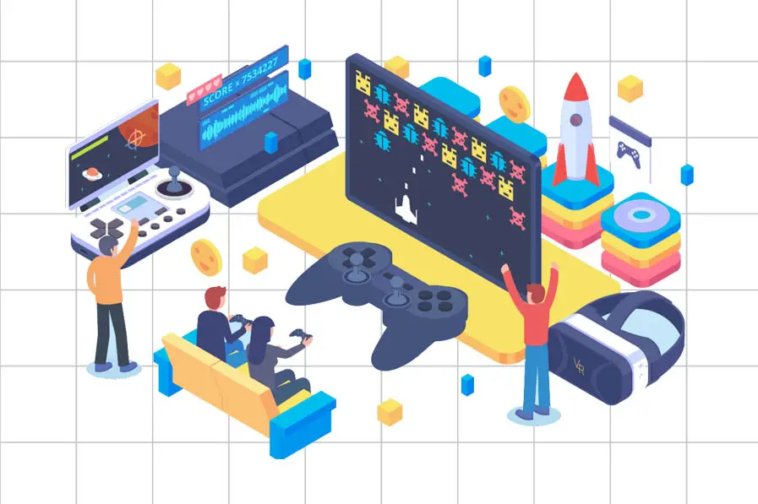Gamers are constantly evolving from casual enthusiasts to professional aficionados. This has increased the demand for a flawless and premium gaming experience. Developers need to deliver games that captivate and seamlessly engage gamers.
This is where game quality assurance (QA) can help. Game QA companies can ensure every release exceeds the rigorous standards of today’s gaming community.
This blog delves into the intricacies of game QA. It sheds light on its critical importance and guides you through the various stages of the QA process. It also explains the technical finesse required to deliver flawless gaming experiences.
What is game QA?
Game QA identifies and can resolve the issues within a game that could impact the gaming experience. It helps meet certain quality standards before a game’s release. It includes testing the game’s:
- Mechanics
- Graphics
- User interface
- Functionality
Game QA plays a critical role in the process of game development and release. It tests the game under various conditions to uncover any bugs or flaws.
Why does game QA matter?
Game QA companies help boost the player experience and contribute to the game’s commercial success. A game with bugs can attract negative reviews, poor user ratings, and decreased sales.
Here’s why game QA matters:
- A well-polished game offers a seamless and enjoyable experience.
- It enhances player satisfaction and loyalty.
- It can lead to positive word-of-mouth and increased sales.
- Game QA also boosts the brand image of game developers and publishers.
- Releasing a high-quality game reflects a company’s commitment to excellence and customer satisfaction.
- It can enhance your brand reputation and reliability in the competitive gaming market.
The QA process
The game QA process involves several detailed stages. Each has its own set of methodologies, techniques, and goals. Understanding these stages and their technicalities provides insight into how comprehensive game testing leads to the release of polished games.
-
Pre-production QA
This helps you identify potential design flaws and establish testing frameworks. Here’s how it works:
-
Prototype testing
Prototypes help evaluate the game’s concept, design feasibility, and potential technical issues.
-
Design documentation review
QA teams review design documents to understand the game mechanics, storyline, and other features. This helps to ensure they align with quality standards and are technically workable.
-
Test plan creation
Detailed test plans help you outline testing strategies, scenarios, and objectives for the entire development cycle.
-
Alpha testing
This tests core gameplay mechanics and primary game functions. This is done in an incomplete version of the game and includes:
-
Functionality testing
This checks if all game functions work as intended. This includes testing game mechanics, user interface elements, and player interactions.
-
Smoke testing
This is performed daily. It verifies the most crucial functions of the game are working. It also checks that no major issues prevent the game from running.
-
Compatibility testing
Verifies the game operates across different hardware configurations, operating systems, and platforms.
-
Performance testing
This checks how the game performs under various conditions. This includes load times, frame rate consistency, and memory usage.
-
Beta testing
This type of testing is done in collaboration with potential players to uncover bugs not found during alpha testing. It focuses on user experience and multiplayer components and involves the following.
-
Closed/open beta testing
Testing is done with a limited group of external testers (closed) or the public (open) to test the game and provide feedback.
-
Stress testing
Stress testing is relevant for multiplayer games. It involves overloading the game servers to check stability and performance under peak loads.
-
Usability testing
It evaluates the game’s ease of use, tutorial clarity, UI/UX design, and player satisfaction.
-
Bug reporting and triage
External testers report issues through bug-tracking systems. These reports are prioritized based on severity and impact on the game experience.
-
Release candidate (RC) testing
This testing is performed to finalize the version of the game that will be released to the public. It covers:
-
Regression testing
This helps ensure that previously fixed bugs have not reemerged due to recent changes or updates.
-
Localization testing
This verifies the game is adapted for different languages and regions. It covers text translation accuracy, cultural appropriateness, and regional legal requirements.
-
Certification testing
For console games, this involves meeting specific platform holders’ requirements to get approval for release.
-
Post-release QA
This addresses the continuous monitoring and updating of the game after release based on user feedback and discovered issues. It typically involves:
-
Patch testing
This is done to test updates and patches before deployment. It helps fix known issues without introducing new ones.
-
Live operations support
This monitors servers and online features for ongoing stability. It also lets you respond to issues as they arise in real-time.
-
Community feedback analysis
This is where the QA team gathers and analyzes feedback from the likes of social media, forums, and in-game reporting. This feedback helps identify common issues and areas for improvement.
Challenges in game QA
Game QA is indispensable to the development of successful games. But it has its challenges. These challenges include:
- Complexity of modern games
- Variety of platforms available
- Tight development schedules
- Evolving player expectations
Addressing these issues requires a keen understanding of game development. You should also take a flexible approach to QA and adapt to the unique demands of each project.
Here are some of these tricky challenges in more detail:
-
Complexity of modern games
Modern games often feature vast open worlds, complex physics engines, elaborate storylines, and detailed character progression systems. Testing such a multitude of elements requires a comprehensive strategy. You must cover every possible interaction within the game.
-
Variety of platforms
Games are now played on multiple devices, including high-end gaming PCs, consoles, mobile devices, and VR headsets. Ensuring compatibility and performance across all platforms is a herculean task.
-
Tight development schedules
The gaming industry often needs to meet tight deadlines. Development teams work exhaustive hours to meet release dates. This pressure often extends to QA teams. You may be given insufficient time to thoroughly test the game.
-
Evolving player expectations
As players become more experienced, their expectations for quality, innovation, and content grow. You need to meet these expectations while innovating and pushing the boundaries.
Conclusion
Media and entertainment testing services play a vital role in game development. Technological advances and a global, connected community of gamers demand a robust game QA process, one that delivers a flawless and engaging gaming experience.
As new technology and storytelling possibilities unfold, innovation in gaming hinges on robust QA processes. The integration of automation and human expertise promises to elevate gaming experiences.
Game QA is enhancing current titles, helping you innovate faster and release new titles. It’s also set to shape the future of gaming, opening up boundless possibilities and experiences.




